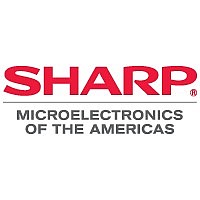LH28F800BVE-BV85 Sharp Electronics, LH28F800BVE-BV85 Datasheet - Page 11

LH28F800BVE-BV85
Manufacturer Part Number
LH28F800BVE-BV85
Description
Manufacturer
Sharp Electronics
Datasheet
1.LH28F800BVE-BV85.pdf
(49 pages)
Specifications of LH28F800BVE-BV85
Cell Type
NOR
Density
8Mb
Access Time (max)
85ns
Interface Type
Parallel
Boot Type
Bottom
Address Bus
20/19Bit
Operating Supply Voltage (typ)
5V
Operating Temp Range
0C to 70C
Package Type
TSOP
Sync/async
Asynchronous
Operating Temperature Classification
Commercial
Operating Supply Voltage (min)
4.5V
Operating Supply Voltage (max)
5.5V
Word Size
8/16Bit
Number Of Words
1M/512K
Supply Current
65mA
Mounting
Surface Mount
Pin Count
48
Lead Free Status / Rohs Status
Not Compliant
sharp
2.1 Data Protection
Depending on the application, the system designer may
choose to make the V
(available only when memory block erases or word/byte
writes are required) or hardwired to V
accommodates either design practice and encourages
optimization of the processor-memory interface.
When V
The CUI, with two-step block erase or word/byte write
command sequences, provides protection from unwanted
operations even when high voltage is applied to V
write functions are disabled when V
lockout voltage V
boot blocks locking capability for WP# provides
additional protection from inadvertent code or data
alteration by block erase and word/byte write operations.
Refer to Table 6 for write protection alternatives.
3 BUS OPERATION
The local CPU reads and writes flash memory in-system.
All bus cycles to or from the flash memory conform to
standard microprocessor bus cycles.
3.1 Read
Information can be read from any block, identifier codes
or status register independent of the V
be at either V
The first task is to write the appropriate read mode
command (Read Array, Read Identifier Codes or Read
Status Register) to the CUI. Upon initial device power-up
or after exit from deep power-down mode, the device
automatically resets to read array mode. Six control pins
dictate the data flow in and out of the component: CE#,
OE#, WE#, RP#, WP# and BYTE#. CE# and OE# must be
driven active to obtain data at the outputs. CE# is the
device selection control, and when active enables the
selected memory device. OE# is the data output
(DQ
memory data onto the I/O bus. WE# must be at V
RP# must be at V
cycle.
0
-DQ
PP
15
≤V
) control and when active drives the selected
IH
PPLK
or V
LKO
IH
, memory contents cannot be altered.
HH
or V
or when RP# is at V
.
HH
PP
. Figure 11, 12 illustrates read
power supply switchable
CC
PP
PPH1/2
is below the write
voltage. RP# can
IL
. The device’s
. The device
PP
IH
. All
and
LHF80V35
3.2 Output Disable
With OE# at a logic-high level (V
are disabled. Output pins (DQ
high-impedance state.
3.3 Standby
CE# at a logic-high level (V
standby mode which substantially reduces device power
consumption. DQ
impedance state independent of OE#. If deselected during
block erase or word/byte write, the device continues
functioning, and consuming active power until the
operation completes.
3.4 Deep Power-Down
RP# at V
In read modes, RP#-low deselects the memory, places
output drivers in a high-impedance state and turns off all
internal circuits. RP# must be held low for a minimum of
100ns. Time t
down until initial memory access outputs are valid. After
this wake-up interval, normal operation is restored. The
CUI is reset to read array mode and status register is set to
80H.
During block erase or word/byte write modes, RP#-low
will abort the operation. RY/BY# remains low until the
reset operation is complete. Memory contents being
altered are no longer valid; the data may be partially
erased or written. Time t
to logic-high (V
written.
As with any automated device, it is important to assert
RP# during system reset. When the system comes out of
reset, it expects to read from the flash memory. Automated
flash memories provide status information when accessed
during block erase or word/byte write modes. If a CPU
reset occurs with no flash memory reset, proper CPU
initialization may not occur because the flash memory
may be providing status information instead of array data.
SHARP’s flash memories allow proper CPU initialization
following a system reset through the use of the RP# input.
In this application, RP# is controlled by the same RESET#
signal that resets the system CPU.
IL
initiates the deep power-down mode.
PHQV
IH
0
-DQ
) before another command can be
is required after return from power-
15
PHWL
outputs are placed in a high-
is required after RP# goes
IH
0
-DQ
) places the device in
IH
), the device outputs
15
) are placed in a
Rev. 1.2
8















